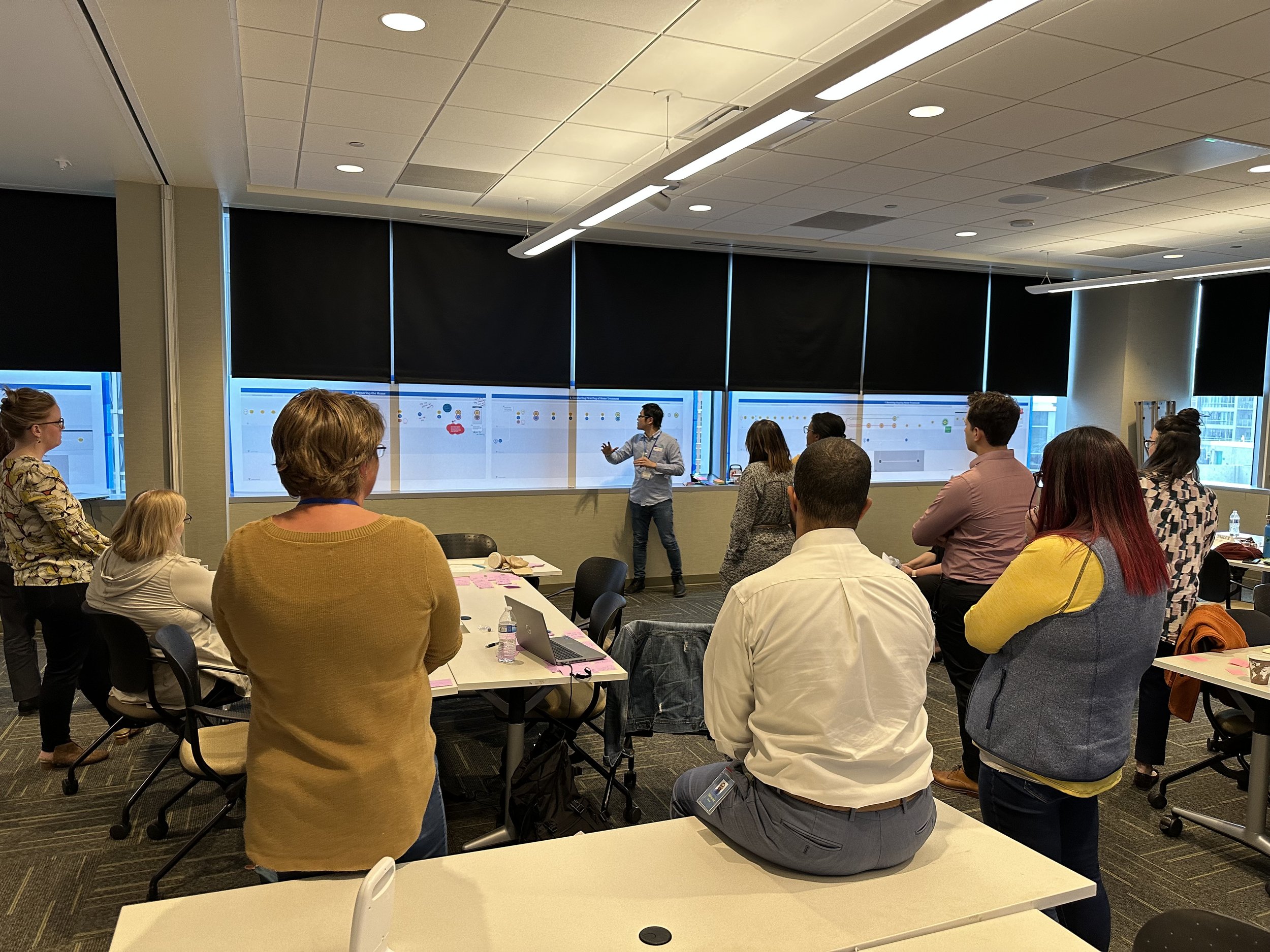
Empowering patients in adopting home healthcare
Learn how service design guided evidence-based opportunities for improving the patient journey and employee experience, enabling patients to confidently manage their care at home with tailored support.
Client: “Healthcare Company” [Confidential]
Sector: Healthcare
Project Type: Consulting
Collaborators: Harmonic Design—Stephen Taylor, Vanessa Rood, Darwin Muljono and “Healthcare Company” Patient Journey team.
Duration: 7-month contract
Services:
Qualitative research
Prototyping & testing
Workshop facilitation
Content design & strategy
Overview
Many patients and their care partners face challenges when transitioning to home healthcare due to a lack of support, clear guidance, and personal fears.
Our project aimed to improve this experience and increase adoption of home healthcare programs by addressing patient needs and improving their overall experience. Using a co-design approach, we gathered feedback from patients, care partners, and care teams to ensure proposed tools and strategies were desirable, viable, and feasible.
Outcome
The project successfully identified key areas for improvement and developed practical solutions to enhance the home healthcare experience for patients, care partners, and healthcare providers.

Process
This project aimed to enhance the home healthcare experience through a research-driven design approach. We conducted literature reviews, stakeholder workshops, and interviews with patients, care partners, and care teams to identify pain points and opportunities for improvement throughout the patient journey.
By integrating in-home research, co-design workshops, extensive blueprinting, storyboarding, and a detailed 70-foot-long experience map, we pinpointed key patient needs. We then developed targeted interventions to improve education, support, and community building, ensuring a smooth transition to home healthcare.
The work was guided by four phases—
Initiation: We started by conducting background research, mapping the current patient journey, and brainstorming potential solutions.
Field Research: We talked to stakeholders to learn about their experiences and get feedback on proposed ideas.
Ideation + Vision: We created a visual patient journey map and held workshops to prioritize solutions, refining them into eight key concepts.
Operationalization: We finalized the patient journey map and developed a detailed plan for company leadership and the patient journey team to take the next steps.
Collaboration with Subject Matter Experts (SMEs)
We first collaborated with nurses and care team members to understand the journey, creating service blueprints that mapped out all touchpoints. We iteratively refined these to cover every aspect of the experience, leading to the creation of an extensive "experience mesh" that highlighted pain points and opportunities for further exploration in a generative workshop.
Alternative Research Methods
Due to a delay in research recruitment of patients across the U.S., we embraced alternative avenues for user experience and desk research including social media (TikTok, Instagram, Facebook communities, Reddit forums) while waiting for access.
Patient and Care Partner Engagement
Once access was granted, we interviewed patients and their care partners at home to understand their needs and preferences. Patient privacy and consent were prioritized. These engagements helped map the patient journey to identify key moments.
Idea Generation, Validation, and Support Systems
We brainstormed and refined ideas with SMEs, testing them with patients and care teams. We developed training sessions, user-friendly tools, and support networks. Additionally, we planned strategies to celebrate milestones and keep patients engaged in the home healthcare program.
Key Findings
Understanding Options: Patients need clear and timely information about healthcare options.
Adjusting to Home Healthcare: Both patients and care partners need support adjusting to the new normal.
Handling Issues: Patients must be equipped to manage healthcare-related problems confidently.
Feeling Supported: Ongoing support from care teams and peer communities is crucial.
Collaborating with care team staff during a co-design workshop, using brainstorming and discussion to develop ideas for enhancing the home healthcare experience.
Key outcomes and recommendations
The proposed interventions, designed and evaluated in collaboration with multiple stakeholders, were crafted to be scalable and sustainable, ensuring that patients and care partners receive the necessary care and support for a smooth home healthcare journey.
The project resulted in revised current and future state service blueprints, an updated experience mesh, eight prioritized concepts, and a detailed implementation plan focused on areas such as patient education, support and training, resource development, and community building.
Overall, this project contributed innovative strategies to support the company’s goal of increasing home healthcare adoption and improving patient outcomes by 25% by 2025. While the specific outcomes are yet to be determined, C-suite leadership was highly impressed and ready to proceed with their internal journey team for the next steps.
Stats
17 distinct concepts generated during hypothesis workshops.
9 patients and 3 care partners interviewed during field research.
15 patients and 5 care partners interviewed during evaluation research.
70-foot experience mesh!
60 concepts developed and over 33 care team + staff members involved in evolution mapping sessions.






